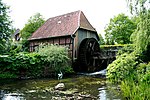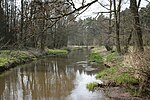German Tank Museum

The German Tank Museum (German: Deutsches Panzermuseum Munster (DPM)) is an armoured fighting vehicle museum in Munster, Germany, the location of the Munster Training Area camp (not to be confused with the city of Münster). Its main aim is the documentation of the history of German armoured troops since 1917. It originated in 1983 from the instructional collection of the Panzertruppenschule, the Bundeswehr (German Army) school for training officers and NCOs of German armoured units. It is now a museum open to the public, jointly run by the municipality of Munster and the Lehrsammlung der Panzertruppen und Heeresaufklärungstruppe am Ausbildungszentrum Munster (teaching collections of the armoured combat troops). The museum site covers an area of over 9,000 square metres (97,000 sq ft). including 7,500 square metres (81,000 sq ft) of exhibition halls. In 2003 the museum opened a new building for special displays, a museum shop and a cafeteria.
Excerpt from the Wikipedia article German Tank Museum (License: CC BY-SA 3.0, Authors, Images).German Tank Museum
Hans-Krüger-Straße,
Geographical coordinates (GPS) Address Phone number Website External links Nearby Places Show on map
Geographical coordinates (GPS)
| Latitude | Longitude |
|---|---|
| N 52.986944444444 ° | E 10.110555555556 ° |
Address
Deutsches Panzermuseum
Hans-Krüger-Straße 33
29633
Lower Saxony, Germany
Open on Google Maps








